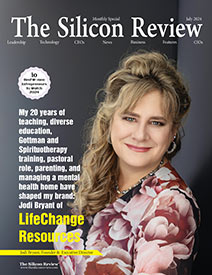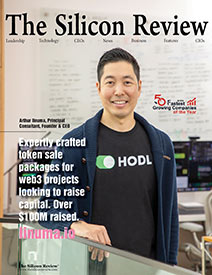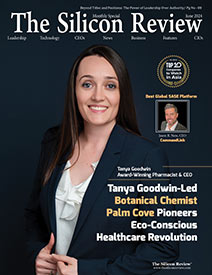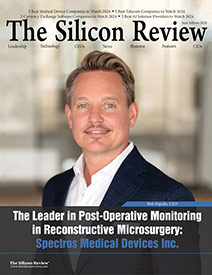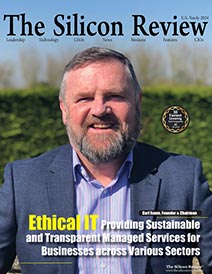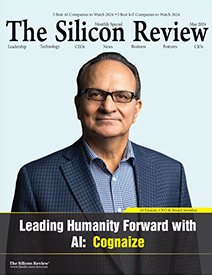50 Leading Companies of the Year 2022
Medgate Philippines – Providing Accessible and Affordable Healthcare to Millions of Filipinos
The Silicon Review
![]()
“Eighty-one percent of our callers are treated telemedically – this means that our doctors are able to give consultation without referring them to a medical facility for further assessment or an emergency facility.”
Telemedicine is a very new concept in the healthcare sector, but due to the recent rapid technological advancements, it has been growing expeditiously. The purpose of telemedicine is to improve a patient's health by enabling two-way, real-time communication between a patient and a healthcare practitioner at a distant site. Besides, telemedicine can lower healthcare costs drive up efficiency and revenue.
Medgate Philippines is one such pioneering company, leveraging revolutionary telemedicine solutions that are transforming the connectivity between patients and healthcare providers. Medgate operates in Switzerland, the Middle East, and the Philippines. Also, it has forged partnerships with global organizations such as Swisscom, Mubadala, and Aetna to bring its brand of telemedicine to the world.
Medgate Philippines was incorporated in 2016 and is headquartered in Makati, National Capital Region.
Stavros Athanasiou, President of Medgate Philippines, spoke exclusively to The Silicon Review about how his company is providing accessible healthcare to Filipinos.
Interview Highlights
Q. What was the motivation behind starting Medgate Philippines?
Based on the Philippine Department of Health, there is a ratio of 1 doctor: 33,000 patients, which leads to a shortage of doctors and a long queue to have a face-to-face consultation. Introducing Medgate in the Philippines is one of the solutions to unclog the medical facilities for patients that wish to have their consultation that are non-emergency. Eighty-one percent of our callers are treated telemedically – this means that our doctors are able to give consultation without referring them to a medical facility for further assessment or an emergency facility.
Q. Can you explain about your services in brief?
We focus on a 24/7 teleconsultation service to provide medical consultation over the phone for any non-life-threatening, non-emergency health concerns. We ensure we have multiple touchpoints to offer accessibility to our patients. We can be reached through landline, mobile phone, website, social media, as well as an upcoming mobile app so that patients can call our doctors anywhere, anytime. What sets us apart from our competitors is having over 22 years of experience in the Telemedicine industry and handling over 12 million teleconsultations globally. The Medgate platform is robust and is tried and tested to deliver high-volume teleconsultations to a large member base. We employ statistically-based clinical guidelines based on over 12 million teleconsultations. These guidelines allow a General Practitioner to treat a dermatological case possibly, or an Internist to treat a pediatric case, etc. Medgate does not rely solely on the knowledge of an individual doctor. Instead, our doctors can lean on the body of work that our entire global organization generates, so our doctors can confidently diagnose and treat our patients. This allows Medgate to diagnose and treat up to 80 percent of the calls it receives.
Q. How does your solution align with the existing medical practice?
As mentioned above, Medgate is able to diagnose and treat up to 80 percent of calls received; telemedicine can be used as a valuable tool in decongesting out-patient clinics and emergency rooms. Allowing these face-to-face medical facilities to focus on conditions that require physical intervention and are not appropriate for telemedical treatment. Out-patient, non-emergency cases can easily and safely be handled telemedically, protecting patients from exposure to more deadly infections and discouraging people from self-medicating that might worsen their existing medical condition. Besides all that, our dedication to empathetic and high-quality healthcare also gives us an edge in how we strive to make sure our teleconsults feel the same as physical check-ups through personalized care, understanding healthcare professionals, and tailor-fit medical advice depending on how we strive on our patients and their conditions.
Q. Many hospitals are focused on the financial aspect of health care and not the quality outcomes. How do you maintain the affordability of your solutions for mass adoption?
Typically out-patient clinics are only open from 9 am to 5 pm Monday to Friday. For many patients, that time period coincides with their work hours. Therefore patients are presented with a choice – either take a day off and lose their daily wage or seek treatment after work. The problem with seeking treatment outside business hours is the patient must go to the emergency room since the clinics are already closed for the day. Unfortunately, the emergency room costs an average of 4,000 Philippine pesos per visit. Medgate's 24/7 teleconsultations allow patients to seek treatment at a fraction of the cost of what emergency rooms charge. Another benefit of telemedicine is that a patient can talk to a doctor from their office when convenient, or there is a lull during the workday without the need to take a day off. A typical teleconsultation at Medgate lasts 10 to 15 minutes. Upon completing the call, appropriate e-prescriptions and e-lab requests are emailed to the patient.
Q. How do you market your services?
Medgate Philippines has ongoing partnerships with some of the country's leading HMO and health insurance companies, including Intellicare, Generali, and InHealth. We also worked with HOUSE Foundation and Real LIFE Foundation to allow scholars to access their services as part of our CSR initiatives. Through these partnerships, members can conveniently consult with a doctor on the Medgate platform 24/7, even having the option to have their prescribed medicines delivered.
Q. Do you have any new services ready to be launched?
Prior to the pandemic, Medgate had set into motion its plans of expanding into key ASEAN markets. The execution of these plans will continue as soon as business travel resumes in the region. Medgate will continue innovating and growing its telemedicine core business as new technologies emerge. The advent of 5G broadband should make for an immersive high-resolution video experience, further enhancing patients' experience. Advances in wearables, especially those with the ability to capture body temperature, blood pressure, and even blood sugar, will usher in a new wave of customers.
Q. What does the future hold for your company and its customers? Are exciting things on the way?
The future of telemedicine is bright, and being able to diagnose and treat more conditions is one of our ultimate goals. But for now, our main goal is more on providing another avenue of healthcare for more Filipinos to access quality medical care while at the same time offloading hospitals and other health infrastructures of non-urgent, non-emergency cases so that they can focus on patients that need physical care.
Artificial Intelligence will be the next big step after smartphone technology. In fact, many providers, including us at Medgate, already employ these. We diagnose and treat our cases based on statistically-based clinical guidelines driven by artificial intelligence engines to help our doctors. Taking data from over 12 million consultations, we employ AI/machine learning to help our doctors determine the best course of action for our patients.
The Visionary Leader Upfront
Stavros Athanasiou is one of the founders, and the current President, of Medgate Philippines. Since the commencement of operations in 2015, he witnessed the growth of Medgate from its infancy to providing telemedicine services to over a 1.6million Filipinos. Before Medgate Philippines, he served as the Chief Financial Officer for Rantarna Pty Limited, a private investment vehicle for a private equity firm. Stavros has also been responsible for controlling financial activities in several entities in telecommunications, leasing private equity, and telecommunications activities.
Stavros earned his Master of Accounting at the University of Technology Sydney and a Master of Taxation through the University of New South Wales. He is currently undertaking a Master of Public Health from Monash University.




